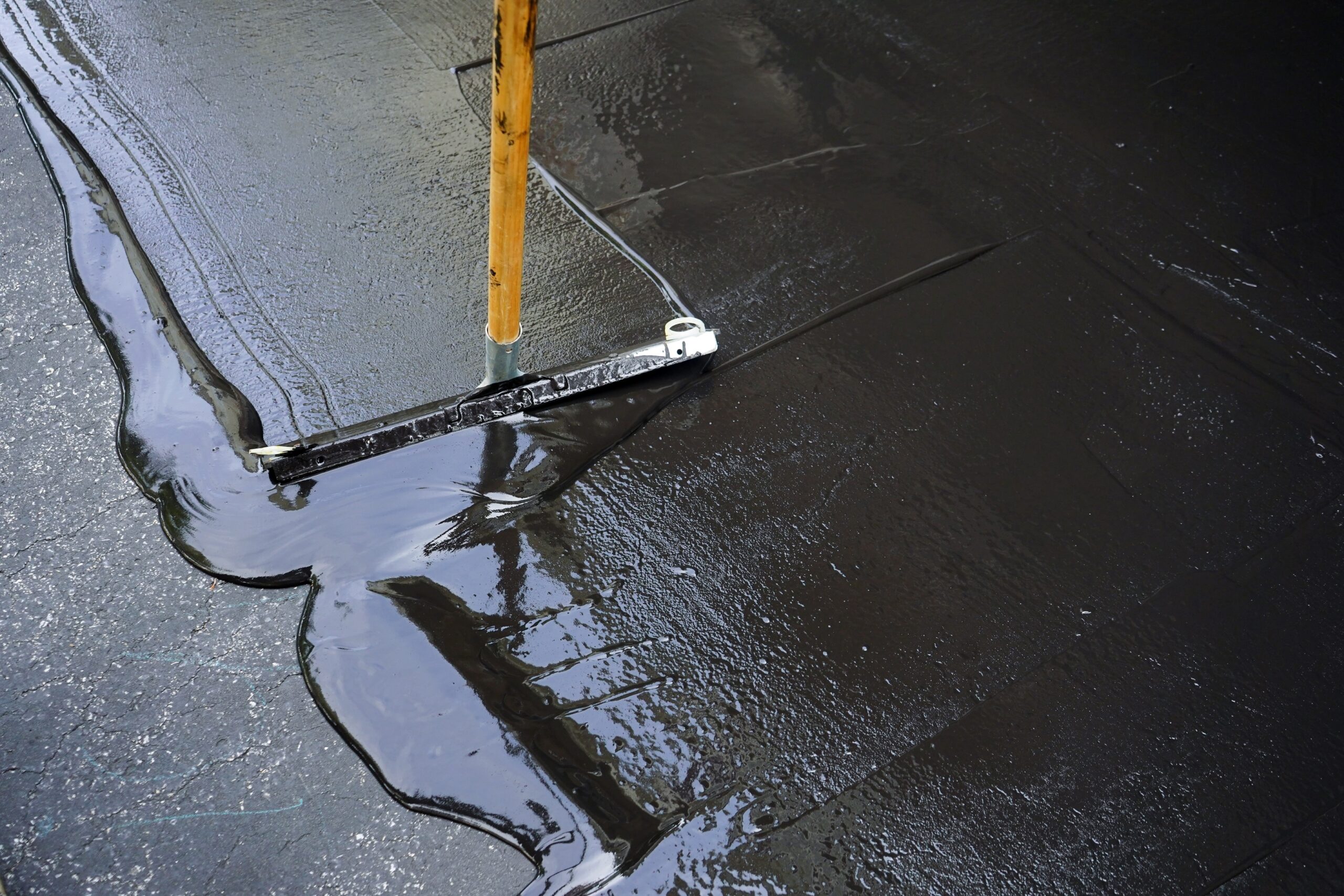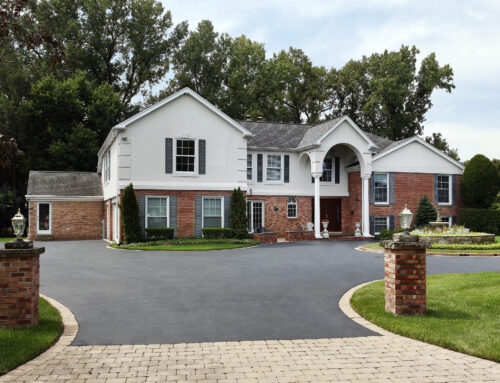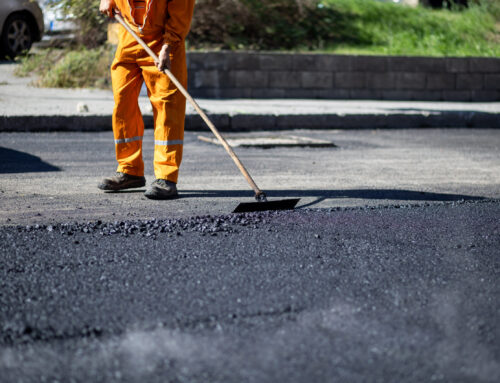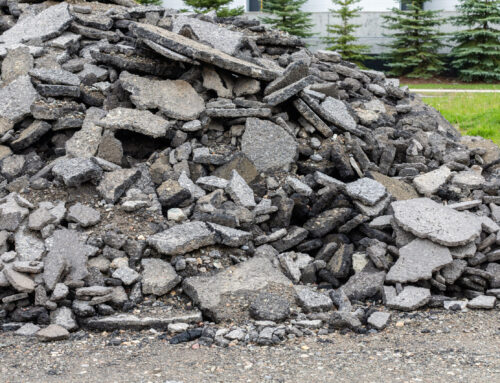Asphalt surfaces, whether they are driveways, parking lots, or roads, are subject to constant wear and tear from traffic, weather, and environmental factors. Over time, this exposure can deteriorate the surface, including cracks, potholes, and fading. To protect your investment and extend the life of your asphalt pavement, regular maintenance is crucial. One of the most effective maintenance practices is sealcoating. Sealcoating is a protective layer applied to the surface of asphalt that shields it from damaging elements and helps preserve its appearance and functionality. This time on the Sunrise Asphalt blog, we’ll explore why sealcoating is an essential part of asphalt maintenance and how it benefits your pavement in the long run.
What Is Sealcoating?
Sealcoating involves applying a protective sealant to the surface of asphalt pavement. This sealant is typically composed of a mixture of asphalt or coal tar pitch, mineral fillers, and water, along with other additives that enhance the product’s performance. The sealant is applied in a liquid form and dries to create a protective layer over the asphalt surface. This layer acts as a barrier against the elements that can cause damage to the pavement, including UV rays, water, oil, and chemicals.
Protection Against the Elements
One of the primary functions of sealcoating is to protect asphalt surfaces from the elements. Asphalt is particularly vulnerable to UV rays from the sun, which can cause the binder in the asphalt to break down over time. This process, known as oxidation, leads to the asphalt becoming brittle and prone to cracking. Sealcoating blocks these harmful UV rays, preventing oxidation and maintaining the flexibility of the asphalt.
In addition to UV protection, sealcoating also provides a barrier against water penetration. Water is one of the most significant threats to asphalt pavement, as it can seep into cracks and crevices, leading to erosion, freeze-thaw damage, and potholes. By sealing the surface, sealcoating prevents water from infiltrating the asphalt, reducing the risk of these costly and damaging issues.
Resistance to Oil and Chemical Spills
Parking lots and driveways are frequently exposed to oil, gasoline, and other chemicals that can degrade asphalt. These substances can soften the asphalt binder, leading to surface damage and weakening the structural integrity of the pavement. Sealcoating creates a protective layer that resists oil and chemical spills, preventing them from penetrating the asphalt and causing damage. This resistance not only extends the life of the pavement but also helps maintain its appearance by preventing unsightly stains and discoloration.
Enhanced Aesthetic Appeal
Over time, asphalt surfaces can lose their rich, black color and develop a faded, gray appearance due to exposure to the sun and other elements. Sealcoating restores the pavement’s dark, uniform color, giving it a fresh and well-maintained look. This enhanced aesthetic appeal is particularly important for commercial properties, where a well-maintained parking lot can create a positive first impression for customers and clients. For homeowners, sealcoating can improve the curb appeal of a driveway, contributing to the overall attractiveness of the property.
Cost-Effective Maintenance
Regular sealcoating is a cost-effective way to maintain asphalt pavement and protect your investment. By sealing the surface and preventing damage from occurring, sealcoating can significantly extend the life of your asphalt, reducing the need for costly repairs or premature replacement. The relatively low cost of sealcoating, compared to the expense of major repairs or complete resurfacing, makes it an economical choice for property owners looking to preserve their pavement.
Improved Pavement Performance
Sealcoating not only protects the surface of the asphalt but also improves its overall performance. The sealant helps fill in minor surface imperfections, creating a smoother, more even surface that enhances traction and reduces the risk of accidents. This is particularly important for driveways and parking lots, where safety is a top priority. Additionally, the smooth surface created by sealcoating makes it easier to clean and maintain the pavement, as dirt and debris are less likely to accumulate.
Easy Application and Quick Drying
One of the advantages of sealcoating is that it is relatively easy to apply and dries quickly, minimizing disruption to traffic and daily activities. The process typically involves cleaning the asphalt surface, applying the sealant using a squeegee, brush, or spray, and allowing it to dry for a few hours before the pavement is ready for use. This quick turnaround time means that sealcoating can be completed with minimal inconvenience to property owners and users.
How Often Should You Sealcoat?
The frequency of sealcoating depends on several factors, including the amount of traffic the pavement receives, the local climate, and the condition of the asphalt. In general, it is recommended to sealcoat asphalt surfaces every 2-3 years. However, high-traffic areas or regions with harsh weather conditions may require more frequent applications. Regular inspections can help determine the optimal sealcoating schedule for your specific pavement.
By investing in regular sealcoating, property owners can extend the life of their asphalt surfaces, prevent costly repairs, and maintain a safe, attractive environment. Whether you have a residential driveway or a commercial parking lot, sealcoating is a cost-effective and efficient way to preserve the value and functionality of your pavement for years to come.





